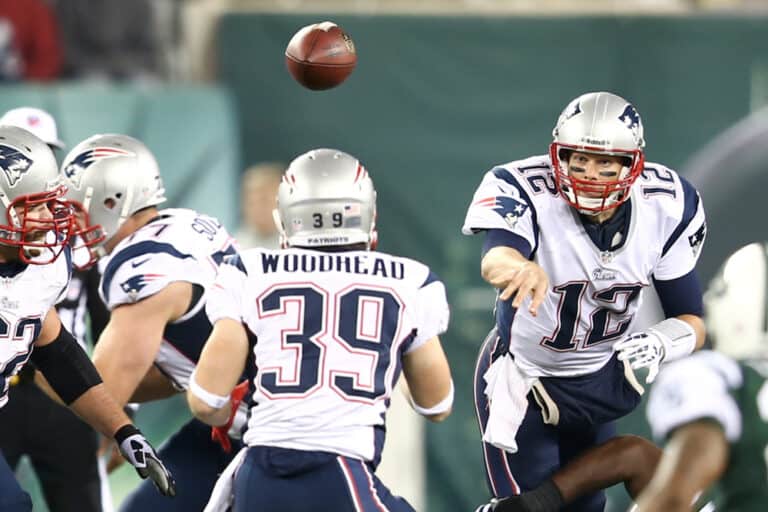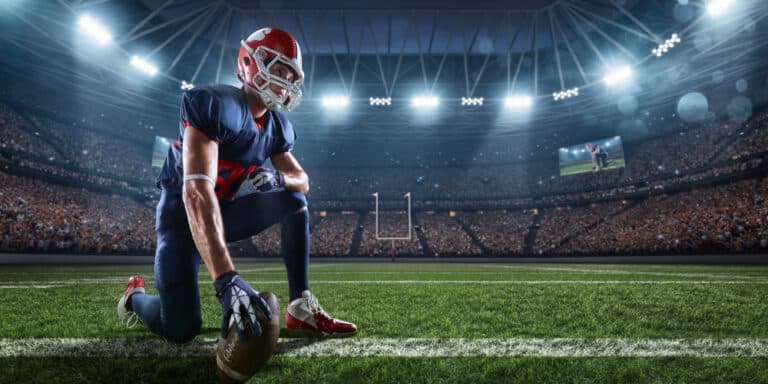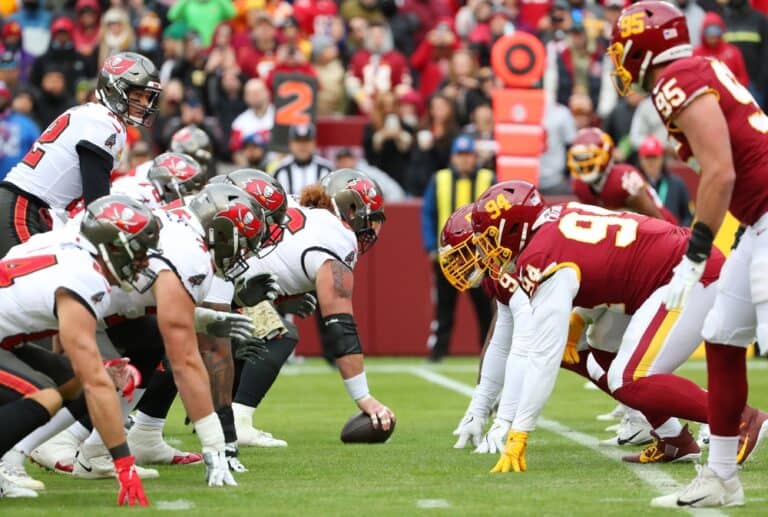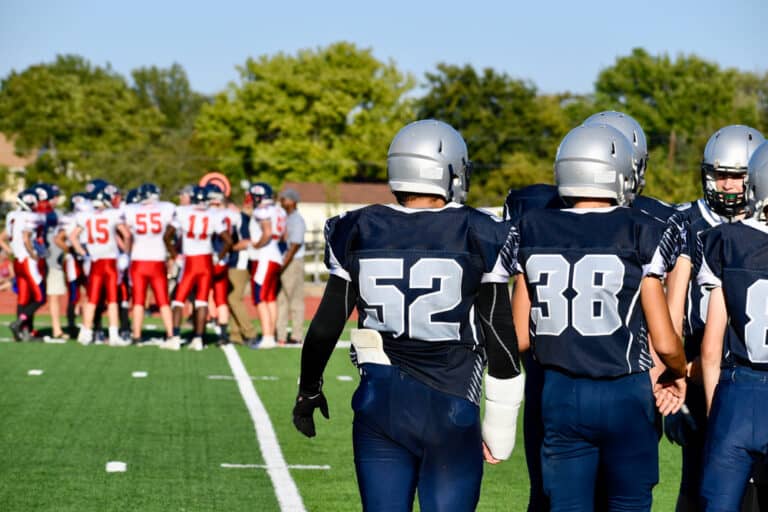Can You Wear Football Cleats For Rugby? (Find Out Here)
To the casual observer, there may seem like there is a significant overlap between American football and rugby. While it is correct that both sports are centered on heavy physical contact among the players, there are considerable differences in their equipment.
Namely, American football players wear helmets and padding, while rugby players do not. However, there is some overlap when it comes to football and rugby boots. So can you wear American football cleats for rugby?
You are allowed to wear football cleats in rugby, provided they meet the following regulations:
- The length of the studs cannot exceed 21mm, The radius of the studs may not be smaller than 1mm,
- The ends must be rounded and not flat/spiked,
- There may only be a single-toed stud.
Along with these regulations come some other differences between football cleats and rugby boots. These need to be carefully considered depending on the position you play in either sport! However, let’s first look at why cleats are needed in both sports in the first place.
Why Do Rugby And Football Players Wear Cleats?
Unlike sports like tennis and basketball, which are played on courts (thus tennis and basketball players can wear sneakers,) rugby and American football players play on natural grass or on an artificial pitch made to simulate natural grass.
Furthermore, these are contact sports that require players to commit to tackles or wrestle control of the ball from the opposing team. Therefore, it is vital that players wear boots that can dig into the ground and give them leverage while tackling and/or scrumming.
If American football players and rugby players do not wear the correct cleats, they risk losing their balance and footing while playing their respective sports, thus significantly increasing their chances of sustaining an injury like a twisted ankle!
Finally, while some American football and rugby stadiums have retractable roofs, most games are played outside with total exposure to the elements. Consequently, it is common for rugby and football players to play in the rain, with the slippery ground underfoot.
Therefore, a quality pair of cleats is needed for safety reasons and to allow players to perform at their best, despite the obstacles presented by rain and marshy playing fields!
What Are The Requirements For Legal Rugby Cleats?
As per the rules published by the IRB at the time of writing, rugby boots need to adhere to the following four requirements:
- The length of the studs cannot exceed 21mm,
- The radius of the studs may not be smaller than 1mm,
- The ends must be rounded and not flat/spiked,
- There may only be a single-toed stud.
The reason for these regulations is to limit the potential injuries in rugby during rucks and scrums. Whereby unlike American football, rucks and scrums encourage players to compete for the ball with both their upper and lower bodies.
Failure to wear boots with blunt studs and minimum height requirements can result in players sustaining terrible injuries to sensitive parts of the body, such as their hands or face.
Therefore, it is common for referees and match officials to inspect the studs of players’ rugby boots before a game to ensure that none of a team’s boots can pose an injury risk to the opposition.
What Are The Differences Between Rugby And Football Cleats?
Along with the aforementioned IRB regulations that govern rugby boots and their studs, there are three common differences between rugby boots and football cleats:
- The number of studs,
- The type of studs,
- Ankle support.
1. The Number Of Studs
Ruby boots typically have between six and eight studs depending on the position of the payer and how they want to configure their stud combination depending on the conditions of the field (more on that below.)
In contrast, American football cleats usually have between seven and twelve studs; however, some cleats exceed this number.
2. The Type Of Studs
All rugby boots are made with detachable studs. The reason is that it allows rugby players to add or remove studs depending on the changing conditions of the playing field and/or should they have to fill in for another position (such as a flank as a member of the forward pack, having to slot in for an injured player in the backline.)
In contrast, while some American football cleats do have detachable studs, the majority of football cleats have fixed studs. These studs are usually rubber or plastic studs that are permanently molded to the cleat, while ruby studs are metal.
3. Ankle Support
Finally, while some rugby boots do have ankle supports, they are seldom as defined and as prominent as the ankle supports found on American football cleats.
What Are The Best Football Cleats (2022)?
Due to the lack of configuration of American cleats compared to rugby boots, it is essential for rugby players to only wear football cleats that complement their position in rugby.
Fortunately, there are a host of football cleats available to suit both rugby and football positions of all divisions:
- Cleats for skill position players,
- Cleats for linemen,
- Cleats for children.
Cleats For Skill Position Players
The following three football cleats are perfect for football and rugby players that play in positions that require skill, speed, and agility:
- Nike Vapor Edge Pro 360 Football Cleats (flexible mesh and thick heel for support)
- Nike Vapor Edge Elite Flyknit (stretchy, durable material, and quick lacing design)
- Adidas Freak Spark Mid (Affordable, lightweight design and traction)
Cleats For Linemen
The following two football cleats are perfect for football and rugby players that play in positions that require power, regular contact, and stability:
- Nike Force Savage Elite 2 (hook-and-loop strap, ankle support, and vast movement)
- Under Armour Highlight MC (lightweight design and UA grip and traction)
Cleats For Children
Finally, the following football cleats are ideal for children exploring various positions in American football and rugby:
- Under Armour Spotlight Franchise 2.0 (versatile and flexible with ankle support)

Conclusion
In conclusion, although there is not a one-to-one correlation between American football cleats and rugby boots, there is enough overlap that you can wear football cleats in rugby, provided the cleats match your rugby position and style of play.







